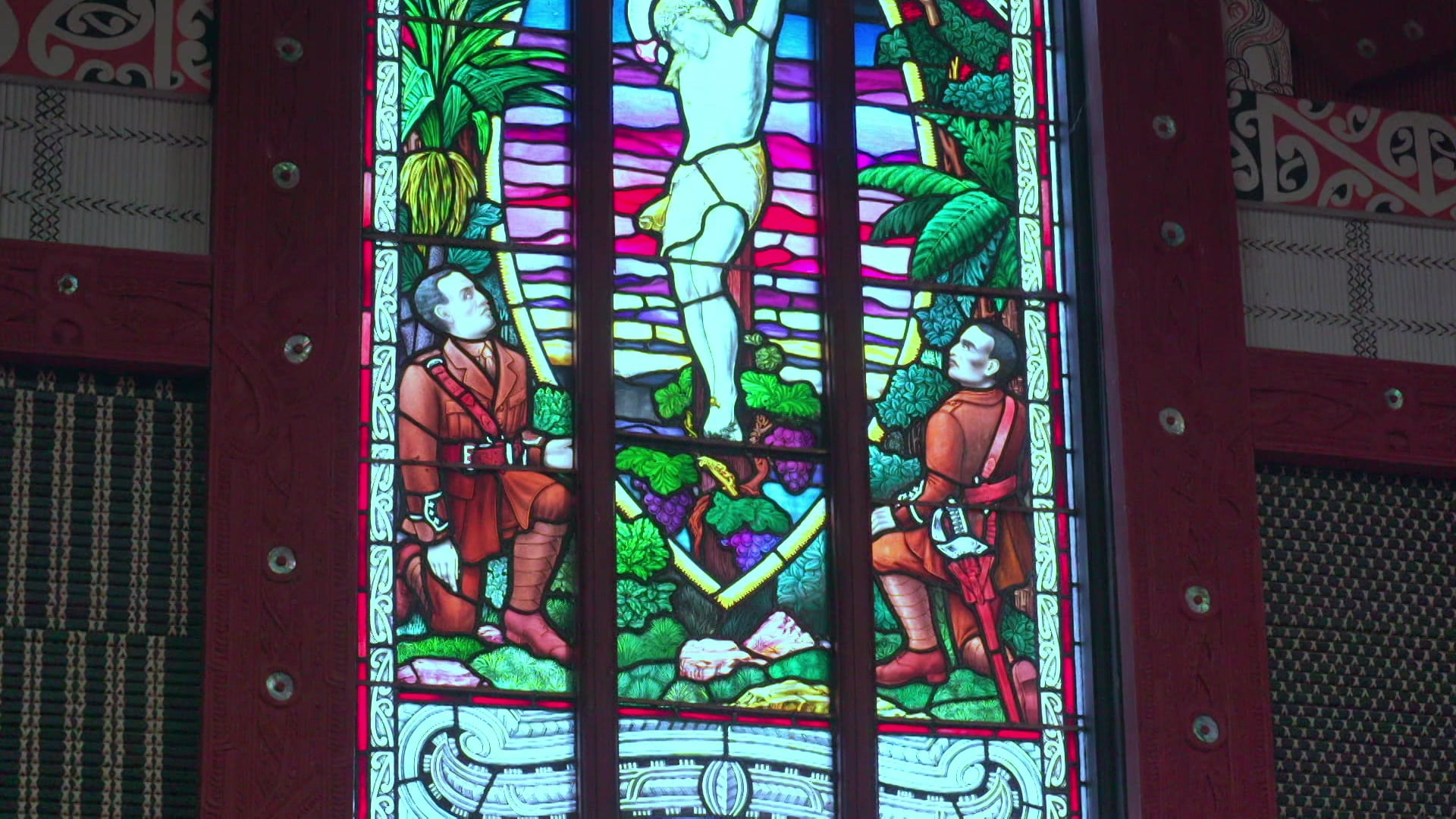Nestled on the hill overlooking the township on the banks of the Waiapu River, St Mary’s in Tikitiki is the only church in Aotearoa consecrated as a war memorial to World War 1 soldiers.
ANZAC Day 1924 saw the foundation stone laid for the highly revered church, and Reverend Nehe Kururangi Dewes can still feel the wairua of his tīpuna and whanaunga within the walls of Mēri Tapu.
“Ko te mea nui ki au, the greatest thing to me about this particular church is the sacredness, the wairua, the purpose it was built for, he maumahara, in memory of those who went overseas in battle.
“I haere āku tuakana te pakanga. My brothers went overseas and I feel their wairua coming in here, that they’re part of this building.”
Many men from the Waiapu valley, and the wider East Coast region joined the New Zealand contribution to the Great War.
St Mary’s was instigated by Sir Apirana Ngata as a way to honour and remember those men, some of whom never returned home.
Patrick Tangaere, a trustee of the church, says it is symbolic of one of the reasons many men around Aotearoa signed up for war.
“The church maybe covers the part where they said they went to fight for God, King and country.
“The thing with this church, it’s for all denominations because those who went to World War 1 were from all different religions.”
A stained glass window inside the church honours two men, in particular, Henare Kohere and Pekama Kaa, both from Rangitukia, at the mouth of the Waiapu river, 5km away from Tikitiki.

Lieutenant Kōhere, was in his mid-thirties when he enlisted. He had done so at the request of Ngata who hoped it would lead to more Ngāti Porou men joining up.
“It was a sacrifice not only to leave his home, to leave his three children, to leave his whanau, at that age.
“But as a leader of Ngāti Porou, it was something he couldn’t turn down anyway,” Rei Kōhere says about his grand uncle.
“I know that Apirana Ngata contributed support for his family. It would not have been easy. Either way he would have been torn.”
Before departing, Henare Kōhere wrote a letter to his three children, Huinga, Ngārangi and son, Hiki.
In it he wrote, “It won’t be long before you see Pāpā again. Huinga, you and Ngārangi keep praying for Pāpā.”
Kōhere never returned. He was badly wounded at the Somme in 1916.
“He was struck by a shell, by shrapnel from a shell that exploded above him. It hit him in the groin and one fragment travelled up into his abdomen. He didn’t die immediately. He lingered if you like, for a couple of days,” Rei Kohere says.
As he lay in a field hopsital, he named his whanaunga Pekama Kaa to be his successor.
“And he chose him, I’m sure, because he identified in Pekama, a leader.
And he wanted a Ngāti Porou leader of that platoon that he had been commanding,” Rei adds.
Kaa himself would later be killed in action. At Messines in 1917, the Germans shelled the trench where Captain Kaa and his men were. Two were killed and several more wounded.
He ordered the survivors and wounded to fall back while he remained behind to carry the deceased away.
“He would have been a brave man to perform what he did. That shows leadership,” his grand-niece, Rerewa Pomana says.
However, Kaa died shortly after when the Germans again shelled the trench. He was just 23.
Two years after the foundation stone was laid, in 1926, Governor-General Sir Charles Fergusson, Prime Minister Gordon Coates and cabinet minister Sir Māui Pōmare were among the 5000 people who attended the consecration of Māui Pōmare. Sir Apirana Ngata led the haka.
It has now had the names of men from the district killed in World War II added to the roll of honour.
